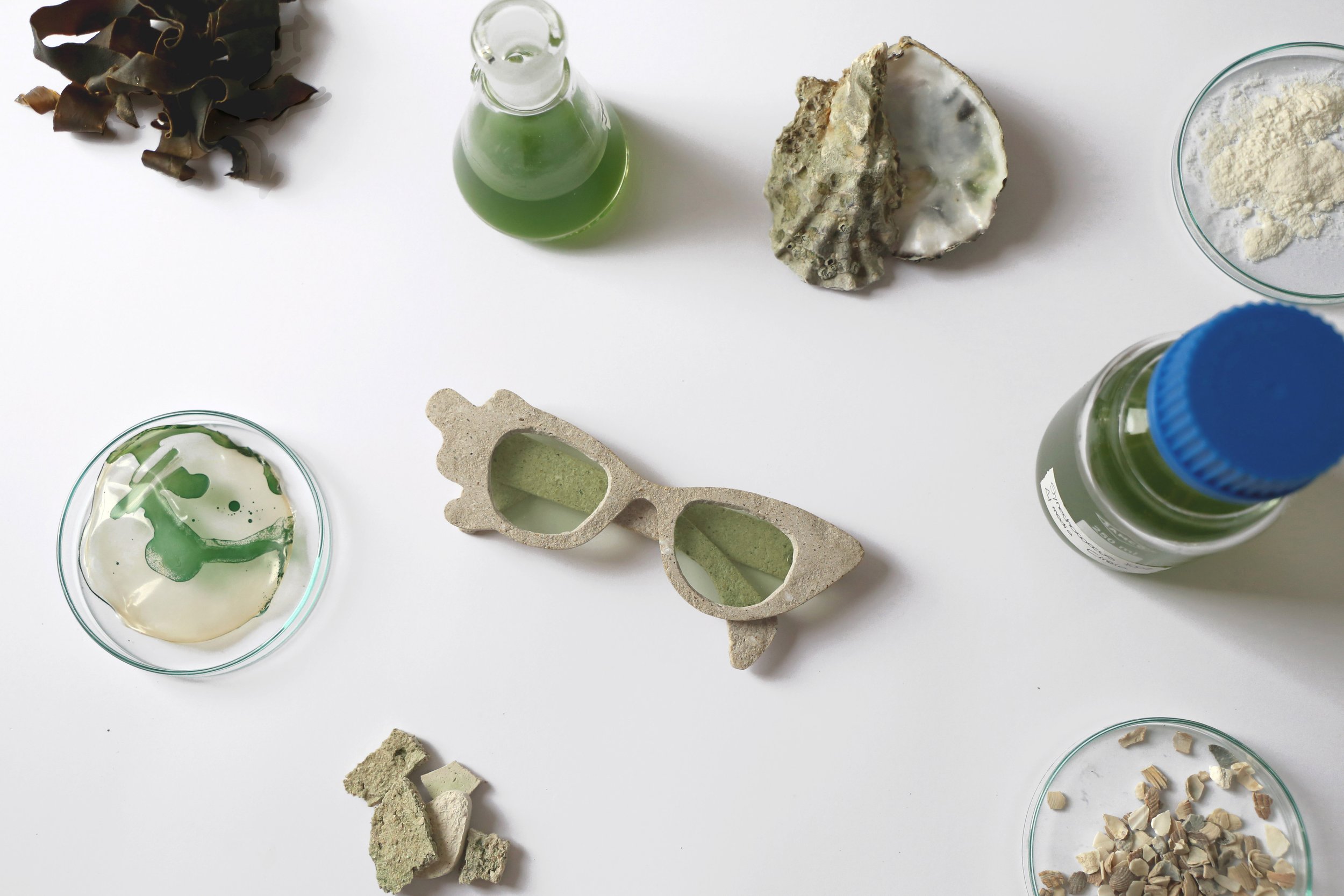
CYANO FABBRICA |
by Cinzia Ferrari
CyanoFabbrica aims to harness cyanobacteria’s intrinsic ability to biomineralize for the design of novel biofabrication strategies.
I chose to make sunglasses frames as the output for my project, which combines my interest in transparency of design communications and innovation practices. The sunglasses sector is a growing market where greenwashing is common. The organism played a fundamental part in my design approach, and contributed to the final aesthetics, which are partially dictated by the way this organism binds its substrate. No two are alike. The temples and front of the frame are made of biomineralized material, while cyanobacteria pigment phycocyanin was used as a print. My process could be optimized to offset its emissions and the product is designed to be remanufactured at the end of its life. Cyanobacteria are photosynthetic, single-celled organisms. They survived the five last mass extinctions, and can be found in almost all habitats. Spectacular examples of biomineralization are stromatolites, the world's oldest known fossils. My project is inspired by research from the University of Colorado at Boulder (Heveran et al, 2020. Biomineralization and successive regeneration of engineered living building materials. Matter), who demonstrated that strong bricks could be created through cyanobacteria biomineralization.
Cinzia Ferrari
I am an Italian design researcher with a natural curiosity for interdisciplinary projects. My journey towards biodesign began during a gap year, after graduating in design from Politecnico di Milano. I went to the Fiji Islands to contribute to marine biology research: diving, studying shark behaviour and checking ecosystem conditions. During my MA in Biodesign at Central Saint Martins UAL, I have explored the strategic integration of biology, design, and technology in diverse projects. This experience has served as a testament to the benefits of bridging across disciplines in the search for better futures for todays' problems – through design innovation. As a biodesigner, I constantly challenge what’s possible. I seek new strategies and operate comfortably in areas that are unknown, aiming to influence – through with my work – how designers can take action and inspiring others to maximize impact.






